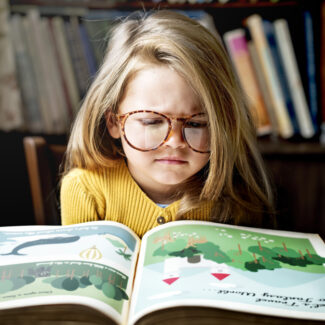High myopia is an eye disease with many implicit complications. Myopia or poor far vision is not only a problem that is corrected using prescription glasses. The most frequent complications are: retinal detachment, maculopathy or alteration of the central part of the retina; the cataract and, the glaucoma or affectation of the optic nerve by ocular hypertension. And among the known causes that originate myopia, it is known that, in 18% of cases, it is due to a genetic or hereditary component, being more frequent if one or both parents also have this pathology. This pathology is more frequent in cities than in rural areas. Perhaps new technologies are wreaking havoc on its prevalence, increasing this proportionally in recent years than before.
Practicing outdoor activities prevent the appearance of myopia, it is very important to take daily breaks from continuous reading, a factor that also influences its appearance. Ambient light increases the production of Dopamine and nitric oxide in the cells of the retina and this prevents the elongation of the eye or the increase in axial length, another of the proven causes of myopia progression. It would be very good to carry out outdoor activities and maintain adequate lighting intensity in the interior spaces.

Among the resources we have today to slow the progression of myopia, the most effective of all is Treatment with atropine eye drops diluted to 0.01%. In the latest clinical studies it seems that the ideal concentration of it is 0.05%. The ophthalmological community has been using it in recent years and its effect is widely contrasted. This is a non-marketed eye drop. It has to be with the medical prescription of an ophthalmologist, and it must be prepared with a magisterial formula in the pharmacy. The dose is one drop per eye every night, and being so diluted, there are no adverse effects such as headache or blurred vision. This requires continuous medical follow-up to see the induced effect. Also and with less effectiveness, new lenses and contact lenses are marketed with a technology based on the peripheral blurring of the image. It will be necessary to see its evolution over time, for this a close collaboration between opticians and ophthalmologists is necessary. The ophthalmologist will need to check the patient’s eye every few months to measure corneal parameters, lens thickness, and axial length.
When ophthalmologists have to treat a child diagnosed with myopia, we must inform the parents of the following:
1.-Outdoor activities are recommended. The ideal would be at least two hours a day or, the fourteen hours a week indicated by the experts
2.-Children should use the Ipad or computer under good lighting, so it is also necessary to increase the contrast on the screens of the devices.
3.-Children’s reading time should not be done continuously or without breaks. It is necessary to stop for a few minutes looking at a distant object and that these breaks are at least every half hour.
4.-To prevent the progression of myopia, treatment with 0.05% Atropine in eye drops is indicated, one drop in each eye and every night.
5. It is necessary to adjust the prescription of the patient’s glasses very well, being able to value some of the new blurring technologies in the lenses or contact lenses.
6.-The patient will need a medical check-up consultation every six months with the ophthalmologist, it will be necessary to dilate the pupil (in cycloplegia) to assess the prescription of the glasses, and measure parameters such as axial length, corneal curvature and thickness of the crystalline.


Recent Comments